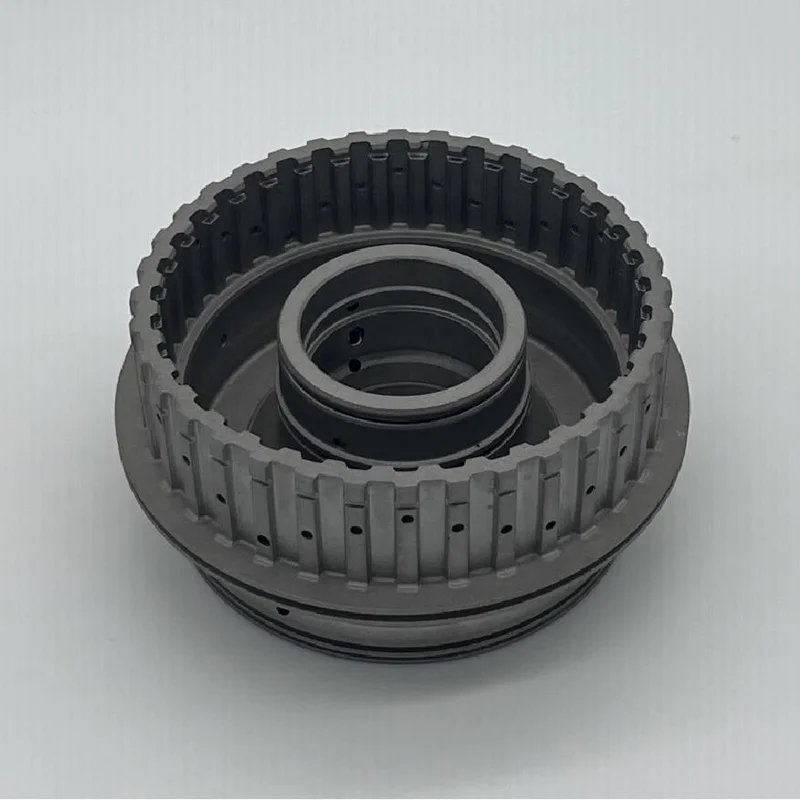Clutch Hubs
Description: Clutch hubs
Process: Aluminum die casting, CNC
Material: A380
Tolerance: +/-0.01mm
Surface treatment: Grit blasting
Material certification: Supply SGS Rohs report
Quality Control:100% inspection before shipping
Application: Auto spare parts
CNC Clutch hub is a part used for transmission machinery, it is usually made of aluminum alloy or steel. The main features of CNC Clutch hub are high precision, wear resistance, long service life, etc. Its manufacturing process adopts CNC machining technology, which can guarantee the precision and quality of the hub.
The strength of the CNC Clutch hub is its high precision and wear resistance. Since its manufacturing process adopts CNC machining technology, the precision and quality of the hub can be guaranteed. At the same time, the material of CNC Clutch hub is usually aluminum alloy or steel, which has high strength and wear resistance, and can maintain stable performance in long-term use.
The application fields of CNC Clutch hub are very wide, mainly used in various mechanical transmission systems. For example, clutch systems in vehicles such as automobiles, ships, and airplanes, and transmission systems in various industrial machinery. The high precision and wear resistance of CNC Clutch hub can ensure the stability and reliability of the mechanical transmission system.
Die Casting Aluminum Hub is a part used for automobile wheel hub, it is usually made of aluminum alloy. The main features of Die Casting Aluminum Hub are light weight, high strength, and beautiful appearance. Its manufacturing process uses die-casting technology, which can guarantee the quality and appearance of the wheel hub.
The advantage of Die Casting Aluminum Hub is its light weight and high strength performance. Because its material is aluminum alloy, it has the characteristics of high strength and light weight, which can reduce the weight of the car and improve the fuel economy of the car. At the same time, the appearance of Die Casting Aluminum Hub is beautiful, which can improve the overall aesthetics of the car.
The application field of Die Casting Aluminum Hub is mainly automobile wheel hub. With the development of the automobile industry, lightweight and energy saving has become an important direction of automobile design. As a lightweight component, Die Casting Aluminum Hub has become a mainstream product of automotive wheels. At the same time, the Die Casting Aluminum Hub has a beautiful appearance and can also improve the overall aesthetics of the car.
Compared with traditional steel wheels, Aluminum Alloy Parts Hub has lighter weight, which can reduce the overall weight of the vehicle, improve fuel economy and handling performance. In addition, the Aluminum Alloy Parts Hub also has good heat dissipation performance, which can effectively reduce the temperature of the braking system and improve the braking effect. The manufacture of Aluminum Alloy Parts Hub needs to be completed through multiple processes such as casting, machining, and surface treatment. First, the aluminum alloy is melted and injected into the mold through a casting process to form the basic shape of the wheel hub. Then, the wheel hub is finely processed through processing technology, including turning, milling, drilling, etc., to achieve the size and shape required by the design. Finally, improve the surface quality and corrosion resistance of the hub through surface treatment processes, such as spraying, anodizing, etc.
Aluminum Alloy Parts Hub has a wide range of applications in the automotive industry to enhance the performance and appearance of vehicles. With the continuous advancement of technology, the manufacturing process and material properties of Aluminum Alloy Parts Hub are also being continuously improved, making it lighter and stronger to meet the needs of different vehicles.
Dongen professional custom Aluminum Alloy Parts Hub, is Die Casting Aluminum Hub factory, Aluminum Alloy Parts Hub company. We have advanced production equipment and technology, and can customize production according to customers' needs and requirements.












Comments (0)